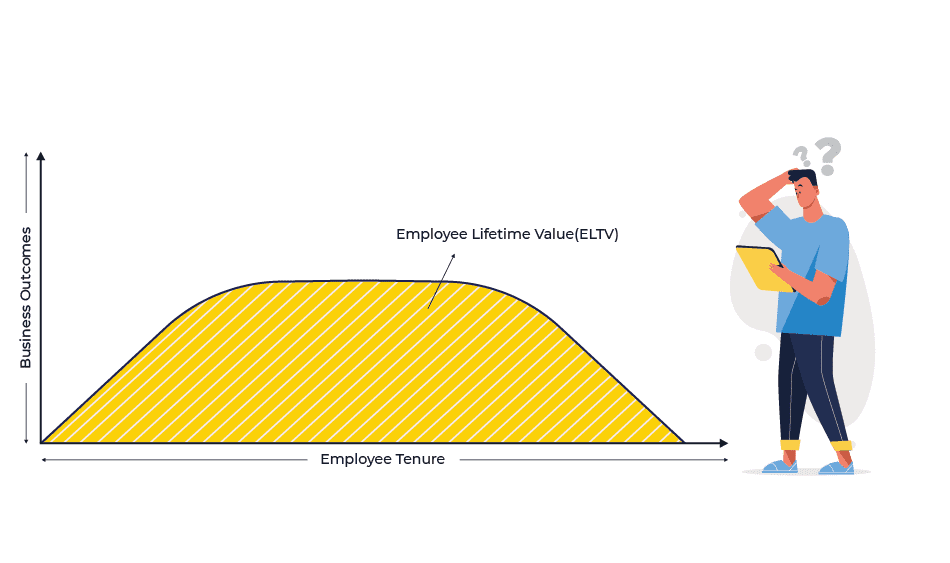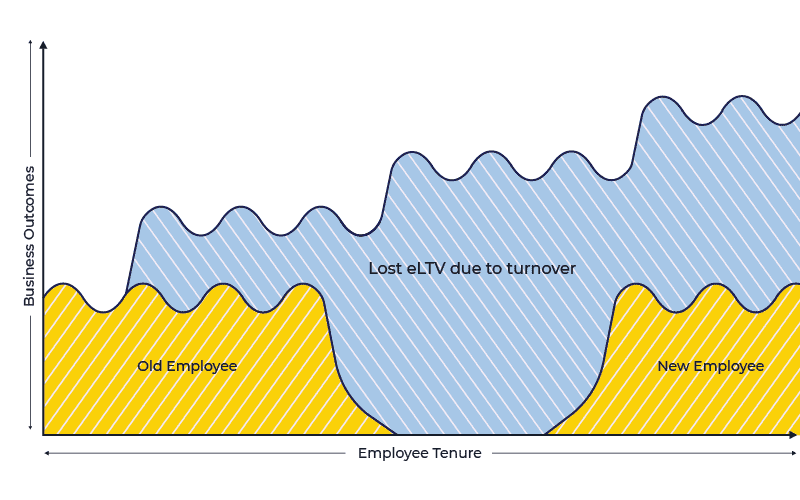Employee Lifetime Value
Single measure of ROI for all HR initiatives in a company.

Employee Lifetime Value drives business outcomes...
Employee Lifetime Value (eLTV) is the cumulative business outcome that an employee generates at a company. These outcomes are measurable as revenue, profit, customer satisfaction, a piece of code, a bunch of leads, or a kick-ass marketing campaign. These are the outcomes that make a business what it is. Success metrics for these outcomes are clear. eLTV is the success metric of an organization's workforce.
Employee Performance
Are employees performing at their potential peak performance levels? Are the programs constantly pushing their potential peak performance levels higher?
Employee Tenure
How long do employee stay in the company? What is the employee acquisition cost? How soon do employee become productive after joining?
...And Employee Experience drives employee lifetime value
The performance levels of an individual depend on the experiences they get daily. The experiences either motivate or demotivate the employee to perform better. Likewise, the same experiences keep the employee loyal to the organization or drive them away.

Employee Experience is not linear
As a result, performance is not linear. To reduce the variance in performance, managers must reduce the variance in experiences. Inconsistency in experiences comes from undercooked managerial styles and the implementation of processes.
Consistency in experiences brings the troughs in performance closer to the peaks, which leads to higher average performance over time.


Employee Experience remains static
As a result, performance is static. Experience creation starts during the hiring process and continues after exit. Different variables impact the experience during the entire lifetime of an employee.
In most cases, Employee Experience is left ad-hoc. It remains stagnant due to the lack of a concerted effort across the employee's psychological need spectrum.


Consistently negative experience results in employee turnover
As a result, organizational performance and productivity reduce. When a settled and performing employee leaves, the wealth of knowledge and know-how leaves.
In cases of high turnover, the organization is constantly chasing performance. The organization loses the incremental multiples of outcomes that a stable workforce brings.
A structured and concerted work on Employee Experience can transform business outcomes

